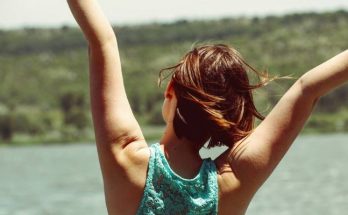By Richard Adelman, M.A.
“This is the most sophisticated and effective method I have seen for the prevention and reversal of deterioration of function. . . We’re condemning millions of people to a deteriorated old age that’s not necessary.” Margaret Mead
What does it mean to you to be a human being standing on your own two feet? Do you fear becoming one of the “fallen” women (or men) of San Miguel?
Our upright bipedal posture is a principal physical feature distinguishing us from the lower animals. As two-legged creatures we have a completely different worldview. We are less stable having only two rather than four points of support; the front of our body is exposed and vulnerable; our precious brain and sensitive eyes are farther from the ground, enabling us to see farther ahead. We can visually and imaginatively project ourselves much farther into the future.
But what happens if we begin to lose our natural grace in walking—if we begin to feel awkward, unsure, and lacking in confidence? Declining physical capacity can result in a shrinking of our emotional self and our sense of bodily identity. Anger/resentment, denial/carelessness, anxiety, fear, and depression are frequent reactions to a changing body. Anger is often directed toward oneself. Or it may be aimed at other people or the world itself (such as when one develops a cynical, pessimistic philosophy of life). A person can come to feel that his body has betrayed him. These emotional attitudes of alienation from one’s own body are very likely to accelerate the process of deteriorating co-ordination and self-confidence on a physical level.
Yet one need not become a victim to these processes. While daily life stresses and perhaps the aging process itself may tend to take us outside of our body, it is possible to work toward living your life experiencing yourself as being inside your own body rather than being on the outside looking in. Somatic psychology teaches that being inside yourself generates a sense of groundedness, of self-possession, of having a secure place in the world. This state may be our birthright but it is not a given. Self-contact is something which can be—and I believe ought to be—cultivated.
Maintaining our balance in standing and in walking requires an incredibly complex symphony of coordinated neuromusculoskeletal activity from head to toe. We are constantly making an endless series of finely calibrated adjustments and readjustments involving many, many parts of the body simultaneously. Aging often brings joint or muscle weakness, stiffness or pain, a slower reaction time with less-nuanced responses, and weaker vision. All of these, as well as other factors, can make it much more difficult to move through the world gracefully, adaptively, and securely.
Let’s briefly explore three issues: pain, falling, and vision. Pain while walking can be a parasitic distraction, draining energy away from important processes such as looking where we are going, feeling the ground beneath us, and monitoring how we are using our body. Furthermore, pain often provokes compensatory movement patterns, and these compensations may have their own negative consequences: they can result in awkward movements which disturb our balance and produce additional wear and tear on other areas of the body.
People who have already fallen or those who are concerned about falling are likely to brace and stiffen themselves in order to give themselves a sense of safety and security. This is a normal reflex reaction of our nervous system. Unfortunately, this stiffening introduces a brittleness and an awkward lack of adaptive flexibility into the gait so that one may actually become less secure and more likely to fall. For instance, such people usually glue their arms to their sides, motionless, depriving themselves of the wonderful capacity of the arms to facilitate and regulate rhythmic flow, balance, and speed in walking.
A brief look at vision issues reveals further paradoxes. As we all know, it is very important to be able to see the ground and to learn to do so religiously when walking on unpredictable and uneven surfaces such as the streets and sidewalks of San Miguel. Insofar as you walk hunched over with your chest bent forward to facilitate your head looking down, you are putting yourself in an unstable posture as well as straining your neck and back muscles. With effective body-awareness education you can learn to better utilize your eyes and head in looking down while walking and can perform gentle exercises to lengthen your back before or after walking.
Even glasses can be a factor. For instance, if you are accustomed to wearing bifocals you might consider getting a pair of lenses dedicated to walking which are designed for only your distance vision. Then you will feel comfortable looking down at the ground through the lowest part of your lenses with a simple eye movement and will not have to bend your head and torso as much to see the ground. Also, you will not be troubled by the “blind spot” line of separation between the two lenses.
Slow gentle movements and hands-on work synthesized from the Feldenkrais Method, somatic psychology, and Pilates offer a way back into contact with your bodily ground and the earth which supports you. Gentle hands-on work, while you lie fully clothed on a massage table, helps to loosen excessive tension, relieve pain, stimulate postural reflexes, and develop a feeling of integration and wholeness in your body.
To a greater or lesser extent, depending on the individual, these same goals can be accomplished through self-initiated movements. In both private and group sessions you can learn a wide variety of intriguing, gentle, stress-reducing lying, sitting, and standing movements to restore body contact, flexibility, comfort, and awareness. Incorporated into your daily life, these movements—or better yet, a combination of these movements and hands-on work—can go a long way toward improving how you relate to and use your body in all daily life activities. In this way, walking may become possible when it was impossible, easy when it was difficult, elegant and flowing when it is easy.
Richard Adelman (M.A., psychology) is certified in Feldenkrais and Pilates and has 50 years experience in Feldenkrais and somatic psychology. He maintains a private practice in manual therapy and gives two weekly classes in gentle Feldenkrais-based movements for seniors (Mondays and Wednesdays, 12-1:30pm, in Salón Semilla, Mercado Sano. Cell/whatsapp: 415 197 7895. Email: richardadelman@gmail.com




